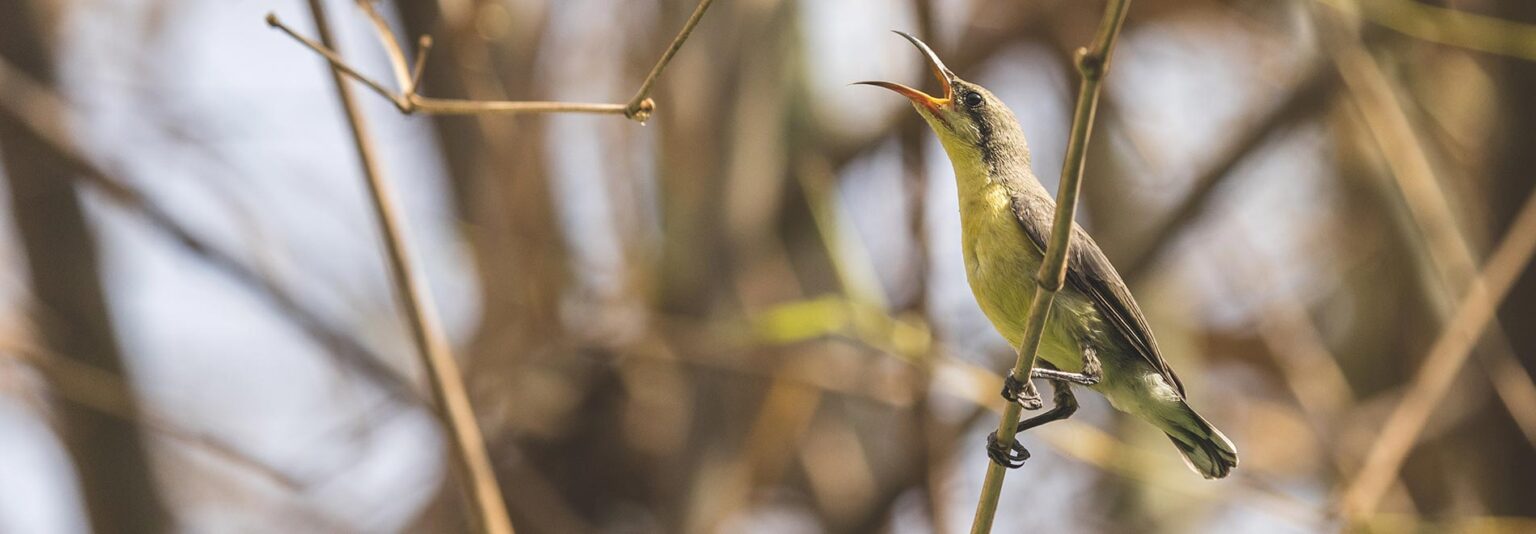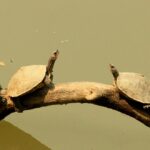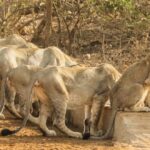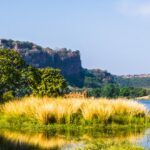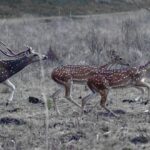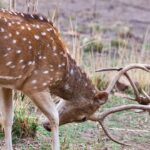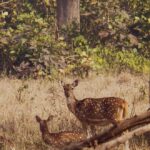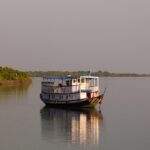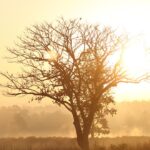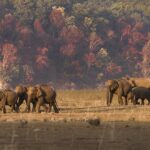Satpura National Park: Visiting the Highlands of Central India
Madhya Pradesh is the rhythmic heart of India singing the most melodious symphony of natural beauty. The pride of Madhya Pradesh is the Narmada River and its tributaries which quench the thirst of the land and nurture it with lush greenery and flourished wildlife. The river is the source of life for the state.
Today let us stride through the marvellous plains of India to explore the highlands in Hoshangabad district of Madhya Pradesh. The district has an astounding paradise named Satpura National Park, which is not only the home for thriving wildlife but also a great camouflage of culture, tradition and history. The tribal villages are the pride of the district.
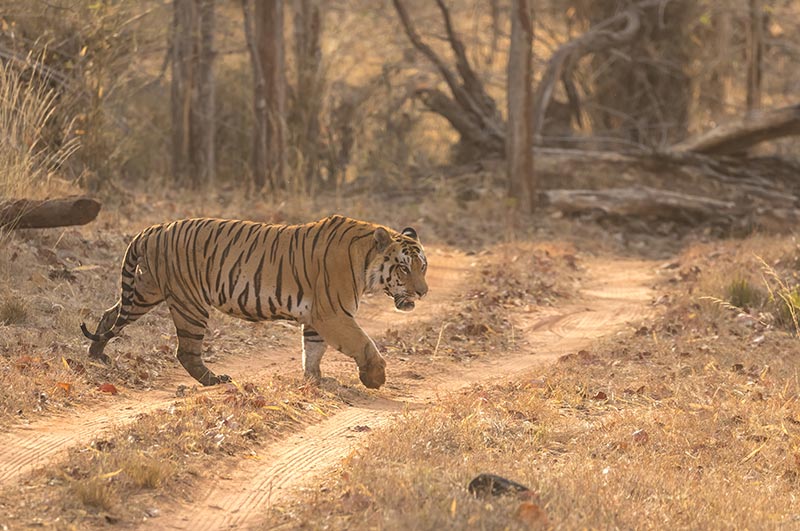
Geography of Satpura National Park
Satpura National Park derives is spread over the Satpura Hills on highlands of Central India. It is located in the Hoshangabad district and it is part of Panchmarhi Biosphere reserve. It lies between latitude 22°11 to 22°56’North and 77°47′ to 78°52’East longitude.
The Satpura National Park derives its name from Satpura Hills, the literal meaning of Satpura in Sanskrit is ‘Hundred Mountains’. The Satpura National Park is spread across a sprawling 524sq. km.
If you are an avid wildlife enthusiast and fed up of crowded wildlife sanctuaries, long waits for safari tickets etc. then Satpura National Park is your dream destination. Away from the noise of safari jeeps beautiful hilly terrains, deep gorges, rivulets, large herds of mammals awaits you in the Satpura National Park.
The climate of Satpura National Park
As the Satpura National Park lies in the Satpura Range of mountains, thus we don’t experience extreme temperatures here. The months from March to June are marked as summer and the temperature during this time can reach a maximum of about 40 degree Celsius. May and June are the hottest months of the year and heat waves prevail throughout the national park during this time.
The Satpura National Park is the abode for winters during the months of November to February. The winters are quite cold as the temperature dips to about 4 degree Celsius. The monsoon hits the park in July and blesses the park until the end of September or beginning of November.
Best time to visit Satpura National Park
The national park is open to tourists from 16th October to 30st June. The monsoon makes the Satpura National Park not accessible. The months from October to March are most suitable for an adventure to Satpura. The tourist arrival is highest during the months of October to December and March to May, other than these months, the park is less flocked by tourists.
The park receives a lot of domestic tourists who come here over weekends to relish the beauty and tranquillity of nature.
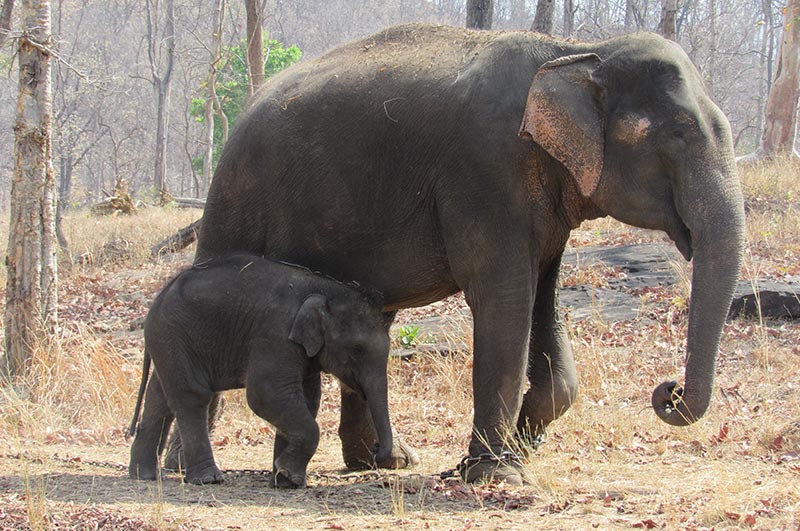
How to reach Satpura National Park?
You can reach the Satpura National Park easily as it is connected to major cities of Madhya Pradesh.
- By air – The nearest airport to Satpura National Park is in Bhopal, about a distance of 190 km. The airport is well-connected to major cities like Delhi, Mumbai, and Indore etc. The other major airport near Satpura National Park is Nagpur airport, approx. 330kms away.
- By rail – The nearest railhead to the Satpura National Park is only 20km away. Sohagpur railway station is a small railway station, so many long-route trains don’t stop here. It would be wise to book your tickets for Pipariya Railway Station which is about 45km away from Satpura National Park.
- By road – As the park is part of Panchmarhi Biosphere Reserve, it is well-connected to major cities like Bhopal, Jabalpur, Chindwara, Nagpur etc. The tourists can enjoy a blissful road trip from these major cities to reach Satpura National Park.
Best Places to stay near Satpura National Park
The options for accommodation near Satpura National Park are limited.
Here we list a few luxurious hotels and resorts near the park.
- Forsyth lodge
- Reni Pani lodge
- Denwa backwater escape lodge
Here are the names of few in-budget hotels:
- Madhai resort
- Sun Shine resort
- Forest Department rooms
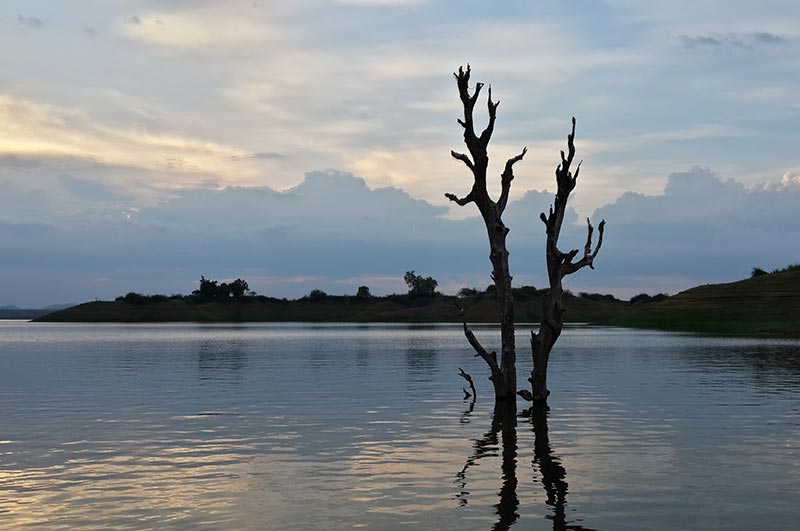
Flora of Satpura National Park
The Satpura National Park has an enriched variety of flora. The predominant species visible in the forest are Sal and Teak. As the Satpura National Park is a highly forested area; it can be widely divided into three major groups:
- Moist deciduous
- Dry deciduous
- Central Indian sub-tropical hill forest
The most exciting part of Satpura National Park is its 1190 species of angiosperms (flowering plants) belonging to 127 families and 633 genera. Let me tell a secret to all upcoming botanists…. Many of the flowering plants in Satpura National Park are yet not identified… It’s time for you to get a flower named after you.
Satpura National Park has about 1300 species of plants including teak, Saal, tendu, mahua (Indian butter-tree), bel (stone-apple), bamboos, grasses etc. The national park is blessed with 62 different species of trees, 30 small trees, 64 grass species, 58 shrub species and 32 climber species.
The park is an abode for many exotic and rare species like Psilotum, Cyathea, Osmunda, Lycopodium, Lygodium etc. The species which are only found in Satpura National Park includes Melastoma Malabthricum, Murraya paniculata, Holmskioldia senguines, Blumea Lanceolaria, Sophora interrupta.
Fauna of Satpura National Park
The diversity of wildlife in Satpura National Park would leave you awe-struck! The park is home for over 50 species of mammals, 254 species of birds, 30 species of reptiles, 50 species of butterflies.
The tourist might catch a glimpse of enthralling species like the Spotted Dear, Indian Bison(Gaur), Tigers, Leopards, Wild boar, Wild dog (locally called Dholes), Sloth bear, Blackbuck (unique attraction), Porcupine, Sambhar, four Horned antelopes (Chowsingha), Smooth otter, Pangolin, Marsh crocodile, Languages, Barking Deer (Muntjac), Malabar Giant Squirrel , flying squirrel, Three Striped Palm Squirrel, Striped-necked Mongoose, Small Indian Civet, Indian Porcupine, Stipped Hyaena, Asiatic Wildcat, Golden Jackal, Rusty Spotted Cat, Blue Bull (Nilgai), Blacknaped Hare etc.
The Satpura National Park has many endemic species like Indian giant squirrels, Flying squirrels, Rhesus monkeys. A trip to Satpura Reserve is an unforgettable moment because of its lavish variation in plant and animal life.
Tiger spotting is not that great about this national park as compared to nearby Bandhavgarh National Park, but the wildlife of Satpura is beyond mesmerising.
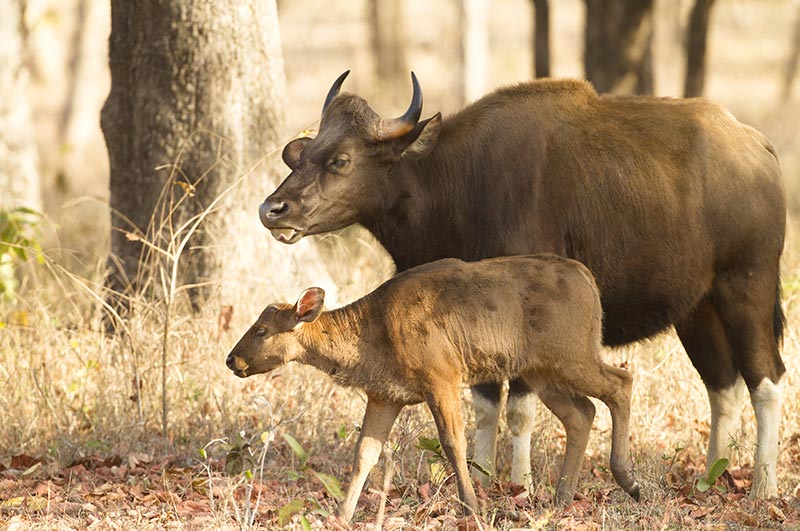
Safaris and activities in Satpura National Park
Just like the vegetation and wildlife, Satpura National Park offers variation in activities too. Visitors here can enjoy elephant safari, Jeep Safari, walking safari, boating and canoeing etc.
Elephant safari –
Nothing is better than the view of a lush Satpura National Park up from the back of an elephant led by a Mahout. This gives you an intimate interaction with the wildlife and vegetation of the park and ensures safety as well.
Jeep safari –
A total of 8 people are allowed on a Jeep, out of which 6 are the tourist and 2 other are guide and driver. Jeep Safari is done on three different routes – Keria Route, Lagda Route and Churna Route. The longest route of all these is Churna, about 30 km long.
Boat safari and canoeing –
The harmony of Satpura National Park can best be enjoyed on a boat safari. The Dewna River offers the most charming and magnificent sight on its flow. Canoeing is another excellent activity for adventure freaks. Canoeing over Dewna River gives a thrill of a lifetime.
Walking safari –
If you wish to truly connect with nature, then traversing the un-trodden path on foot is the most relishing way. The wonderful sights of nature revive your spirit and give eternal peace.
But to enjoy these activities make sure you confirm your booking in advance and avoid any last minute hustle. So are you ready to spend your vacation in the lap of Satpura National Park?



